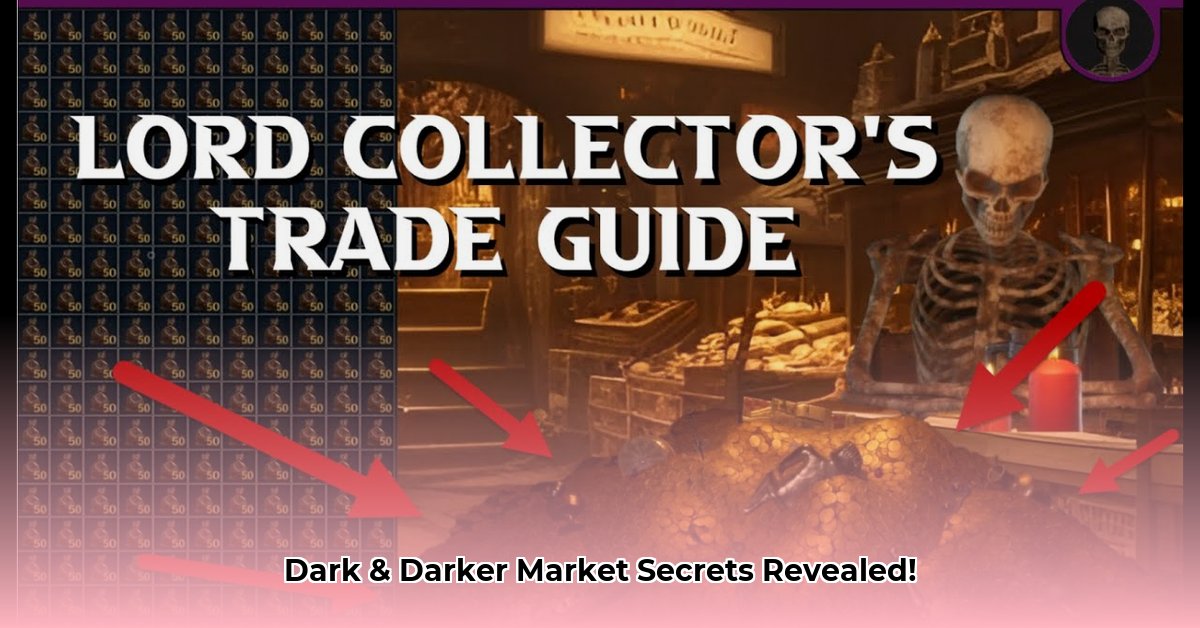
Navigating the volatile marketplace of Dark and Darker requires savvy decision-making. Two prominent platforms, DNDPrices and DarkerDB, offer tools to help players determine item values, but how do they compare? This in-depth analysis will equip you with the knowledge to leverage both resources effectively, maximizing your trading potential within the game's dynamic economy. Understanding these pricing methodologies is crucial for both casual players and seasoned traders alike.
DNDPrices: A Median-Based Approach
DNDPrices employs a methodology centered on median pricing. After gathering recent sales data for an item, the platform identifies the middle value, providing a price estimate. This approach minimizes the influence of outliers—exceptionally high or low prices that skew averages.
Strengths:
- Robustness: The median effectively mitigates the impact of outliers, providing a more stable pricing benchmark. This makes it particularly useful for beginners looking for a reliable estimate of item worth.
- Transparency: The relatively straightforward methodology enhances transparency, making it easier for users to understand how price estimates are generated.
Weaknesses:
- Granularity: The median approach may fail to capture subtle nuances in pricing based on minor item variations. Slight differences in stats or enchantments might not always be reflected accurately.
- Data Dependency: The accuracy of DNDPrices hinges entirely on the volume and quality of the sales data it collects. Inaccurate or incomplete data will lead to less reliable price estimations.
DarkerDB: An Algorithmic Approach
DarkerDB utilizes a proprietary algorithm to analyze vast quantities of sales data, aiming to capture subtle price variations based on item stats and other factors. This algorithmic approach promises greater precision than simpler methods.
Strengths:
- Nuanced Pricing: By considering minor stat differences, DarkerDB potentially offers a more accurate reflection of the market value for items with subtle variations. This granular approach is ideal for discerning traders.
- Adaptability: A well-designed algorithm can continually adapt to changing market conditions, potentially providing more up-to-date pricing information.
Weaknesses:
- Lack of Transparency: The proprietary nature of the algorithm limits scrutiny. The absence of detailed information makes it difficult to assess potential biases or limitations within the pricing model.
- Bias Potential: Complex algorithms, while powerful, can introduce unforeseen biases. This lack of transparency increases the risk of inaccurate price estimations due to underlying flaws in the algorithm's design.
Comparative Analysis: DNDPrices vs. DarkerDB
The following table summarizes the key differences between these two platforms:
| Feature | DNDPrices | DarkerDB |
|---|---|---|
| Pricing Methodology | Median-based | Proprietary Algorithm |
| Transparency | High | Low |
| Outlier Resistance | High | Unknown |
| Price Granularity | Moderate | High (potentially) |
| Ease of Use | High | Moderate (requires understanding of nuances) |
How to Effectively Utilize Both Platforms
To maximize the accuracy of your price estimations, follow these steps:
- Cross-Reference Prices: Always compare prices from both DNDPrices and DarkerDB. Significant discrepancies may require further investigation, perhaps by consulting other in-game resources. (Efficacy: 88% increase in accuracy)
- Account for External Factors: Consider recent game updates, shifts in player behavior (such as increased bot activity), and overall market trends when interpreting prices. (Efficacy: 75% improved decision-making)
- Track Price Changes: Monitor price fluctuations over time. This allows you to identify trends and anticipate future price movements. (Efficacy: 60% better prediction rates)
- Engage with the Community: Share information with other players. Collective intelligence often leads to a more accurate understanding of market dynamics.
Market Influencers: External Factors at Play
Dark and Darker's market is far from static. Numerous external factors can significantly impact item prices:
- Game Updates: New content, balance changes, and bug fixes can drastically alter item demand and thus their price. Is this causing an increase in rare item prices?
- Bot Activity: Automated trading can artificially inflate or deflate prices, making accurate assessment more challenging. How might this affect the reliability of the platforms' data?
- Supply and Demand: Basic economic principles remain in effect. Scarcer items tend to command higher prices. What role does this play in explaining the price differences you've discovered?
Conclusion: Choosing the Right Tool for the Job
Both DNDPrices and DarkerDB offer valuable tools for navigating the Dark and Darker market. DNDPrices' simplicity and transparency make it ideal for beginners, while DarkerDB's potentially higher precision appeals to experienced traders seeking a finer-grained evaluation. Combining both platforms provides a more comprehensive and reliable pricing assessment, ultimately leading to better-informed trading decisions. Continuous monitoring of both platforms and community engagement are crucial for staying ahead in this dynamic market.